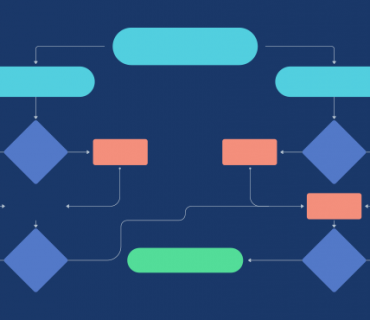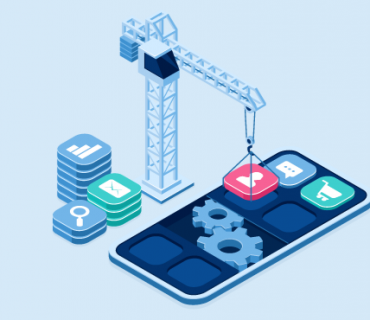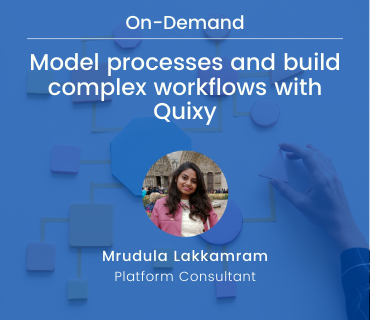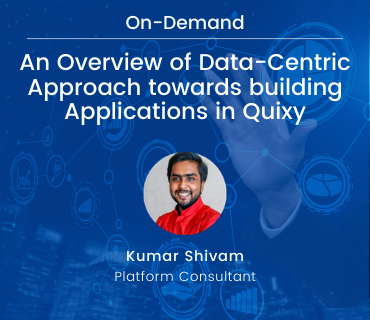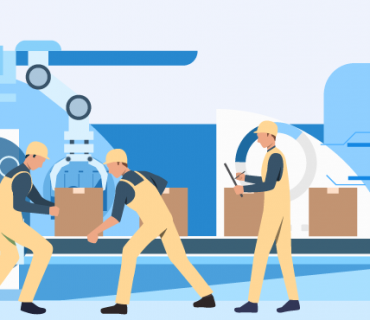Digital Process Automation (DPA)
Bring in the culture of constant workplace innovation with Digital Process Automation
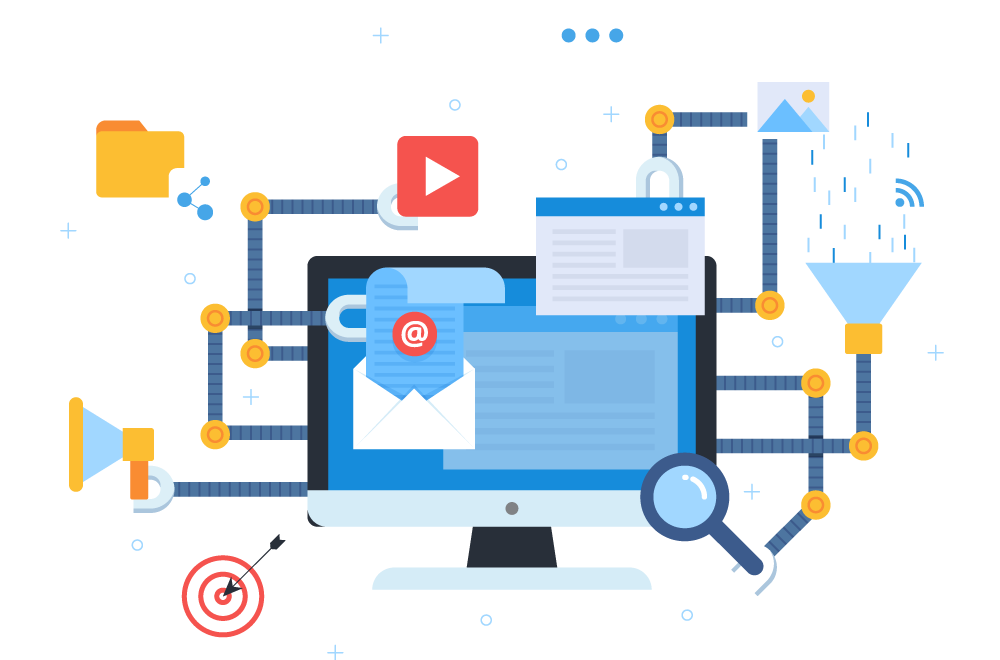
What is Digital Process Automation (DPA)?
Digital Process automation is the process of automating business processes for better efficiency and boating productivity. DPA helps organizations optimize processes and implement process automation and workflow automation through digitization.
It is essentially the practice of digitizing processes and systems, then automating that data and information. It is then sharing and transferring data to allow everyone accesses to anything they might need to know or use.
Digital Process Automation is keeping business systems up to date all the time, where everyone in the organization can perform their tasks without waiting for information or request access for something they need to use. It focuses on automating tasks within businesses that typically need repetitive human interaction.
Frequently asked questions about DPA
What is a Process?
Fundamentally, a process is a set of tasks that are related to each other. They are initiated either simultaneously or one after the other to achieve a common goal or a result.
It is crucial to keep in mind the thin line between tasks and processes. Processes are drawn by a result-oriented approach. A process is always done keeping the end result in mind. It is easy to execute and optimize based on the situation. A process is known to increase productivity by 24,000%.
There are many different types of processes and 3 of them are important for all businesses. They are:
1. Operational processes: Processes revolving around the core business objective are operational processes. For a retail company, this would be taking orders and manufacturing the products. For a service company, it could be converting leads and delivering the service on-time.
2. Management processes: Management processes determine the future of the business. They are all about planning and optimizing the business.
3. Supporting processes: Hiring resources, tech support, etc. are supporting processes. Despite the word “supporting” we would like to emphasize that these processes are just as important as the other two.
These processes have been manual since time but the advent of the internet and digital transformation has led to the digitalization of these processes and then to become Digital Process Automation.
What is No-code Process Automation?
To put it simply- No-code process automation is automating processes without having no prior knowledge of code. It is essentially automating processes using no-code apps. It makes process automation and workflow automation a breeze.
No-code, shortened from no-code platforms refers to application development platforms to automate processes that require zero coding! This means applications can be built on purely visual, intuitive interfaces with no need for programming experience. These platforms often offer features that are simple such as drag and drop form builders.
They work the same way you get to design a collage with stickers, simply take what you need and put it where you need it most. It eliminates the need for any coding.
Processes like applicant tracking, employee onboarding, leave management, project and task management, IT service request management, travel, and expense management, CRM, etc can easily be automated with the help of no-code. No-code apps ensure that process automation happens seamlessly and boosts effectiveness.
No-code has the potential to automate any business process that too within hours. It eliminates human intervention by automating any manual, repetitive processes and enables workflow automation. The overall streamline that no-code automation creates is unparalleled by any other software.
What are the benefits of Digital Process Automation?
1. Saves Hours: By automating all the many manual tasks in the organization, DPA eliminates the monotony and error-prone repetitive tasks. It actually gives employees the ability and mind space to focus on more strategic and valuable work.
2. Ensures Precision and Accuracy: When things are done manually, there’s always the risk of losing documents or missing steps in a process. DPA eliminates this completely with forms automation. So, there will never be an instance where a document has been misplaced or a step has been missed. Everything is consolidated, precise, and exactly where data has to be and ensures seamless workflow automation.
3. Optimum Spends: Digitized and automated processes make businesses realize additional unnecessary spending. The extra costs of customization and IT won’t be incurred, resulting in optimal spending. Employee efficiency will also go up. When these two benefits are combined and translated to finances, organizations have observed a major saving because of DPA.
4. Embraces Customization: DPA is quite adaptable. Businesses can scale new solutions without wasting any time depending on what the market wants. This directly impacts customer experience, which is the number one criterion for business success.
5. Boosts Employee Satisfaction: Digital process automation ensures that employees don’t have to go through the same repetitive and boring tasks again and again. Since they know exactly what they have to and want to do, especially with the saved time from admin work- DPA not only stimulates thinking and innovation amongst them but also creates a sense of satisfaction and motivates them to participate at work.
6. Eliminates Repetetive Tasks: Organizational processes contain endless tasks that are boring and repetitive in nature. From documents approval to negotiations and endless forms. DPA eliminates these repetitive tasks by digitizing all of these processes and automating to create a smooth workflow and save time for the employees.
7. Transparency & Visibility: DPA enables what traditional systems fail to- providing visibility and transparency. Involvement of many departments and teams in various processes like HR, finance department and external suppliers and vendors leads to a loss of clarity and less visibility on the overall process.
DPA ensures that every process is well-mapped out and eliminates the risk of intransparent workflows and operations.
8. Data Accuracy & Timely Reports: Manual processes invite major challenges in terms of data entry, accuracy and transparency. Report delays are often and also have a risk of misplacement. Digital process automation completely gets rid of the human intervention since data keeps getting recorded in real-time and ensures accuracy by taking proof on the spot. Reports and analysis become a breeze since everything is accessible via a dashboard with consolidated data.
9. Streamlined & Clear Communication: DPA has enabled collaboration and communication like never before. Agile digital process automation enables setting up notifications, and reminders and helps teams communicate better within themselves, resolve tasks faster and record their speed through time tracking applications.
10. Error-free Workflows: By digitizing and automating processes, DPA eliminates errors made on a day-to-day basis by any party involved in the process.
What are the features of Digital Process Automation Software?
Digital process automation (DPA) helps businesses implement complete automated workflows and process automation solutions. The right digital process automation tool ensures seamless processes and helps build applications to manage all digital workflows. Typically, digital process automation software has the following features:
1. Workflow automation and optimization of processes: Workflows can be automated from start to end to ensure that the whole sequence occurs seamlessly. The workflow may also include escalations, approvals, reminders, and other sub-processes.
2. Enable no-code processes and app development features
3. Process automation and involve an intuitive and graphic interface without the need for technical expertise to operate
4. Analytical Data and Insights: a typical DPA software must and will have data capturing. Since all tasks and workflows take place in real-time, analytics help businesses determine where and why a particular workflow failed or succeeded.
5. User response and adaptation: DPA enables what manual processes fail to- rapid and instant responses and adapting to user-specific tasks and workflows.
6. Fixing outdated processes: Before automating, organizations can refine and update their processes. After this, automation takes care of optimization and increased efficiency. Manual work will be minimal and every step will comply with the company’s regulations henceforth.
What are the must-automate processes with DPA Software?
It honestly depends from organization to organization, industry to industry. But, for common understanding, here are the top processes every organization must automate
- HR- Employee Onboarding, Timesheet Management Leave application process,
- Finance- Expense Management, Invoice, and Payments
- Sales- CRM
- IT- Service Request Management, Incident reporting
- Project Management- Task Management, Minutes of the Meeting
Read a detailed article over here.
What is the difference between RPA and Digital Process Automation?
As per Forrester, RPA is a subset of DPA. It is the ultimate low-touch approach for process improvement.
RPA assumes that the process will stay as-is and builds bots that replace low-value human hours. Populating tables, quality and testing, desktop consolidation, and replacing data entry tasks are typical targets.
RPA aims to further eliminate the need for a human to work on repetitive tasks, while DPA focuses more on process automation and workflow automation. Basically, automating processes for optimizing workflow. DPA and RPA can complement each other and function in the same environment simultaneously.
What is the difference between BPM and Digital Process Automation?
Digital Process Automation is easy to get confused with business process management, as both have similar goals in workflow processes. But the key difference between BPM and DPA is that Business process management, also called BPM, is the management of processes- not necessarily by automating them.
DPA is an important subset of traditionally perceived BPM software, but the shift in tech is driving the need for businesses to digitize and automate processes as a part of wider digital transformation initiatives. BPM software is usually focused on building, operating, and automating important business processes driven by data and human decisions, but doesn’t focus much on the digital transformation initiative.
At the core, BPM software is designed for an effective and agile work environment and produces greater efficiency and compliance within an organization. DPA goes further by expanding beyond business processes- to customers, suppliers, and partners so that organizations drive better customer experience.
A massive benefit of DPA its capability to enable faster and effective operations within organizations that too within lower costs and a more customer-focused workflow. DPA doesn’t need a human element as BPM may have- it allows the mechanical steps to be managed by an automated and intelligent process flow.
How to start Digital Process Automation?
Start small – taking one step at a time.
This gives organizations and teams the time to understand processes, bottlenecks, priorities. It helps them fail quickly, and recover. As businesses adapt, they proceed and learn. This mitigates risks and gives the security to scale fast. For instance, forms automation can help you go paperless and ensure accuracy!
In order to automate digital processes, you must first start by digitizing them. Document all the processes and digitize one after the other. Start with a data management process and digitize it.
After that, bring in automation. Identify the steps that you can automate – you may need a few tools for this or a platform that handles DPA end-to-end.
It is seen that app developers and vendors are adapting their offerings. By making them more modular and consumable through different delivery channels, they are enabling different touchpoints and modalities and tapping into them. DPA requires an approach that looks at offerings from this perspective- an architectural approach.
Quixy is a leading no-code Digital Process Automation platform for wide deployments that helps you implement effective workflow and process automation through no-code app development – quickly and efficiently.
How organizations can use DPA?
Organizations can use DPA in multiple areas such as pricing approvals and customer onboarding. Once these processes are digitally automated and improved on a regular basis, organizations immediately have the edge over the rest. Read more here.
What are the considerations when purchasing a Digital Process Automation Software?
Digital Process Automation requires careful and researched investment. It’s not complicated, it just requires organizations to understand themselves in terms of:
1. Requirements: Do your research. Know what you want and you’d like your software would like to do- whether digitize internal processes or external too, whether have intelligent automation etc.
2. Budget: Based on your requirements, come up with a budget.
3. Offerings: Check out which platform fulfills your requirements and offers you the best deal- answer questions like data analytics and having reported, providing a visual interface, etc.
4. Rankings and Reviews: Check the platform's reviews on credible sites like G2 and Gartner Peer Insights - they offer a great perspective for customers.
Quixy is one of the top-rated platforms for DPA by G2. Check out a detailed review here.
Digital Process Automation Blogs
Learn about DPA - Infographics
On-Demand DPA & No-Code Webinars
How can different job functions benefit from DPA?
How can different industries benefit from DPA?





